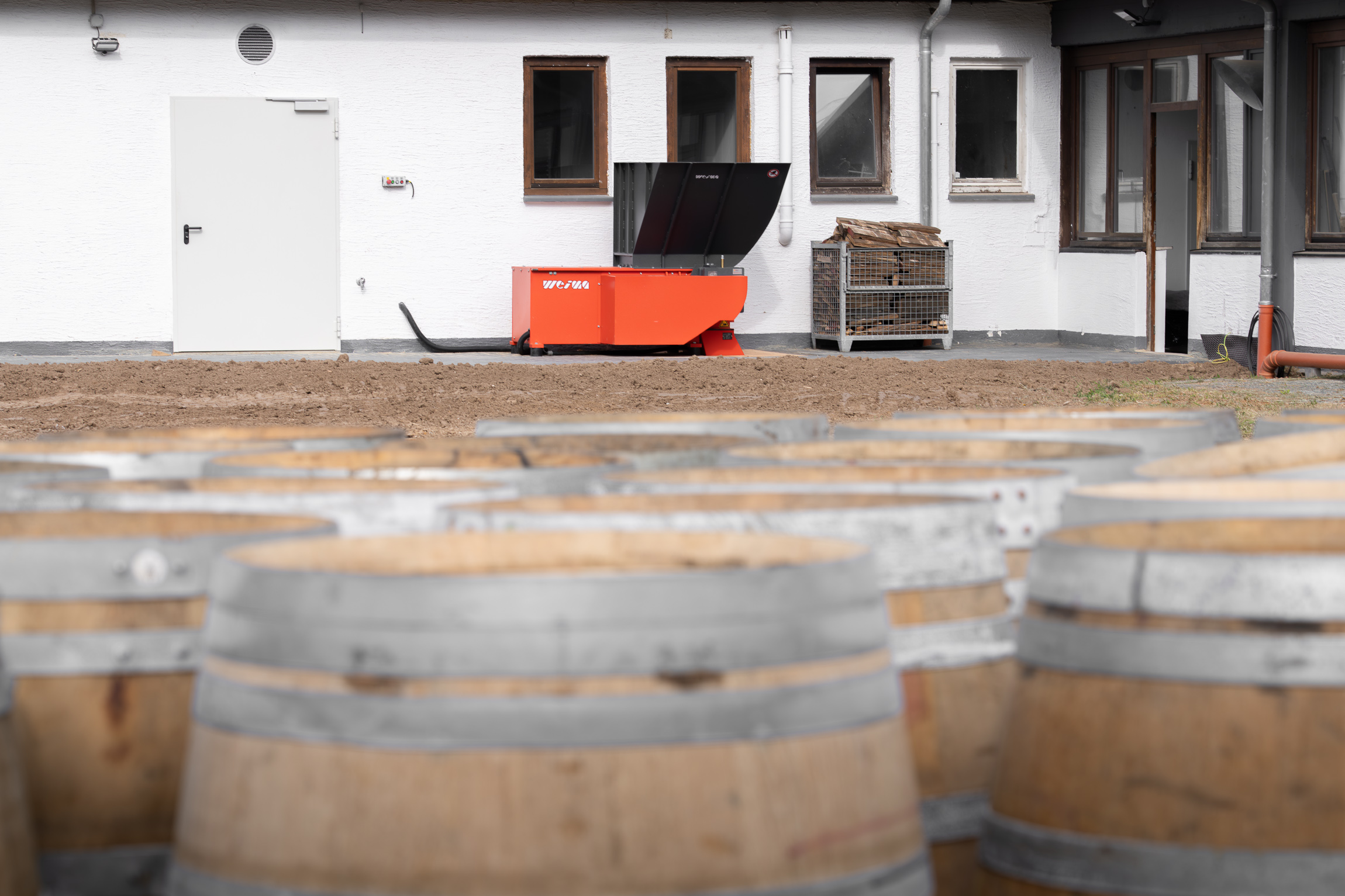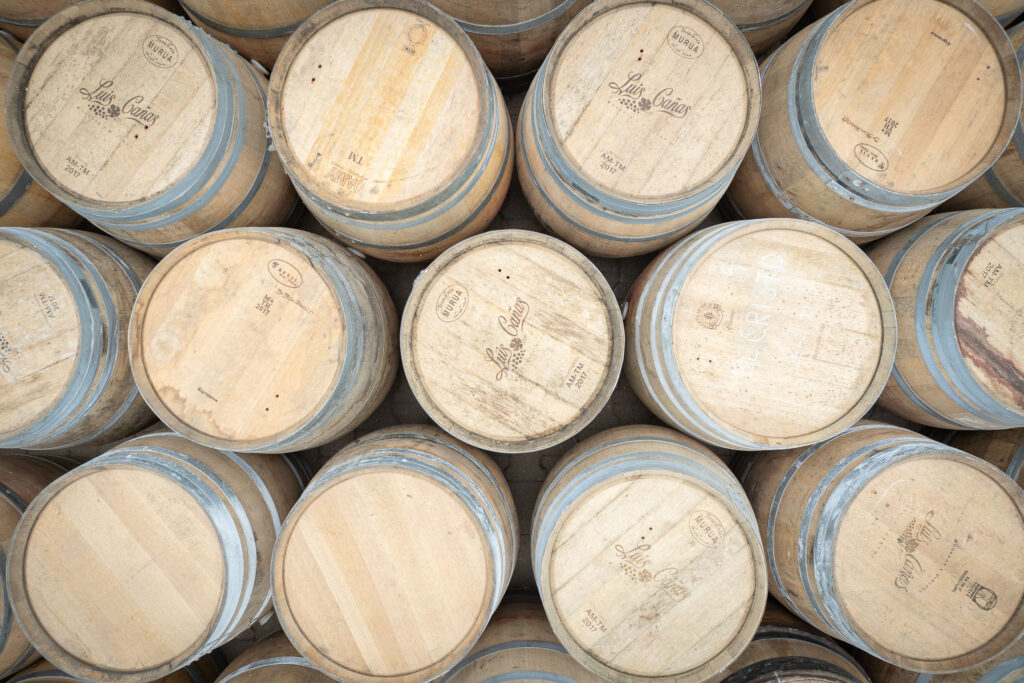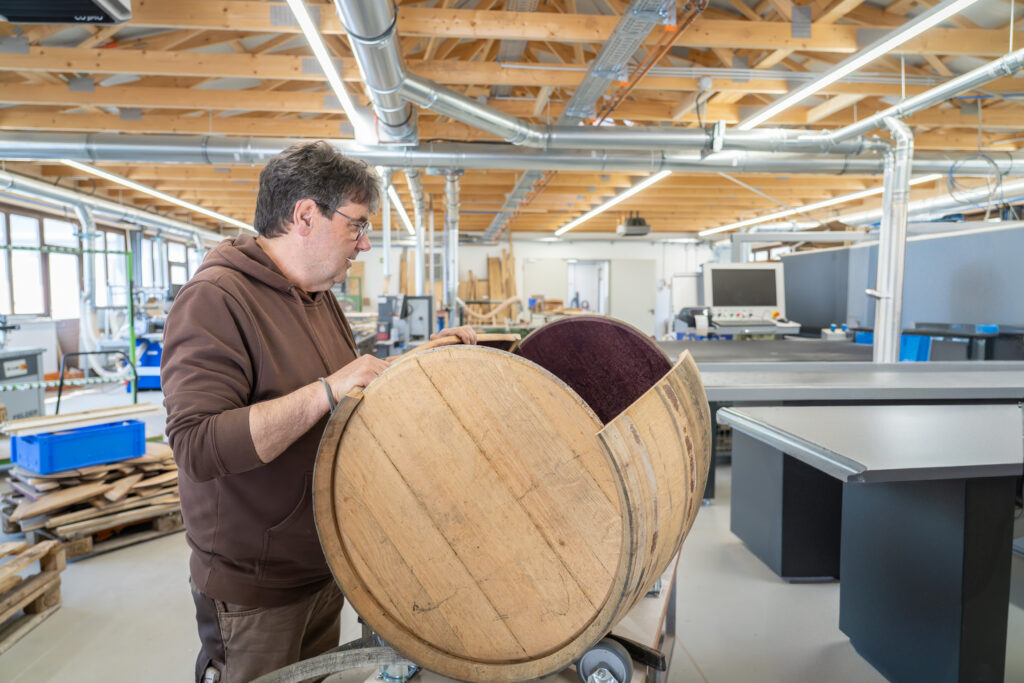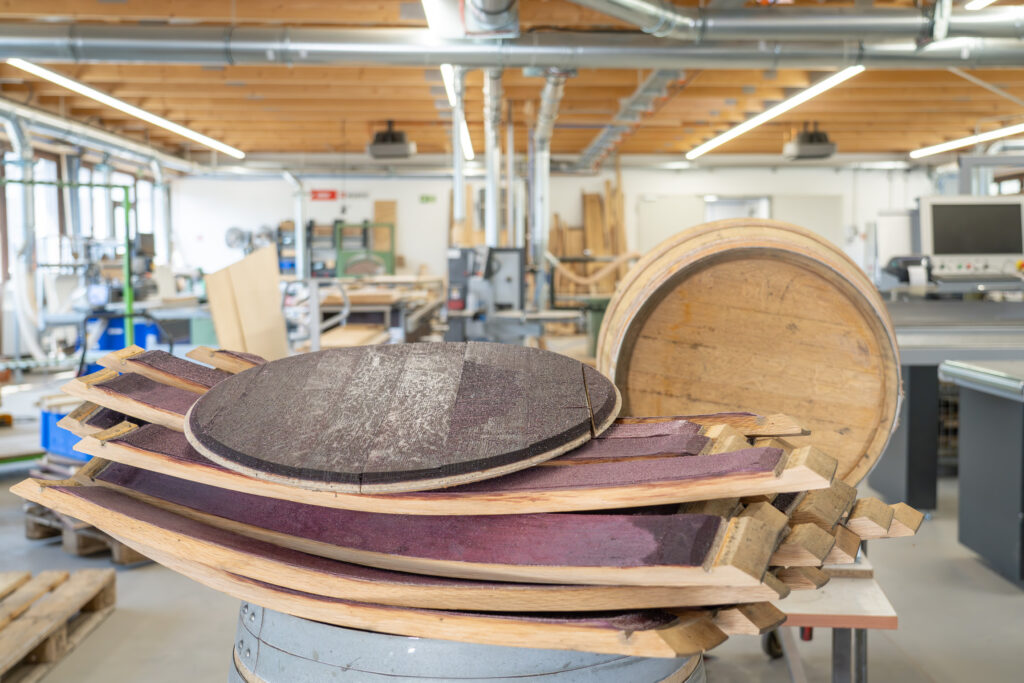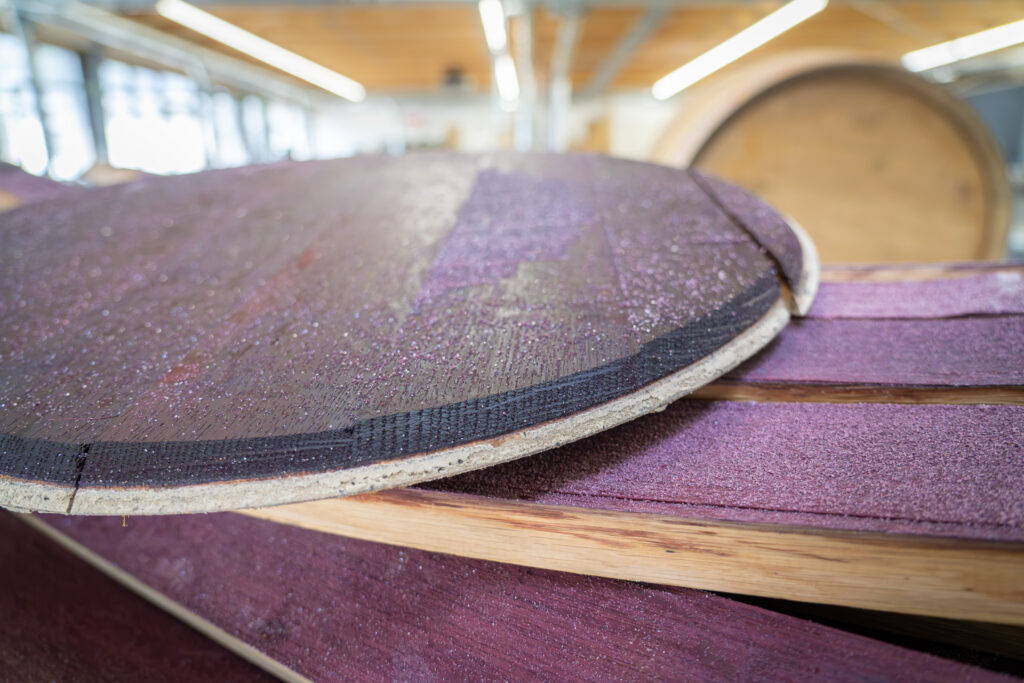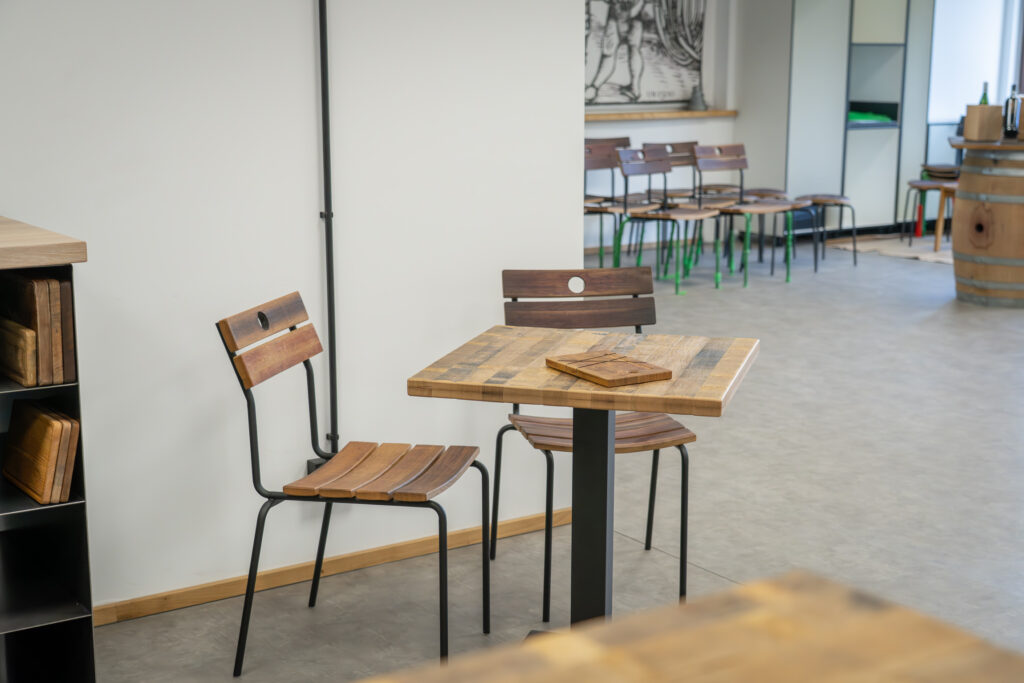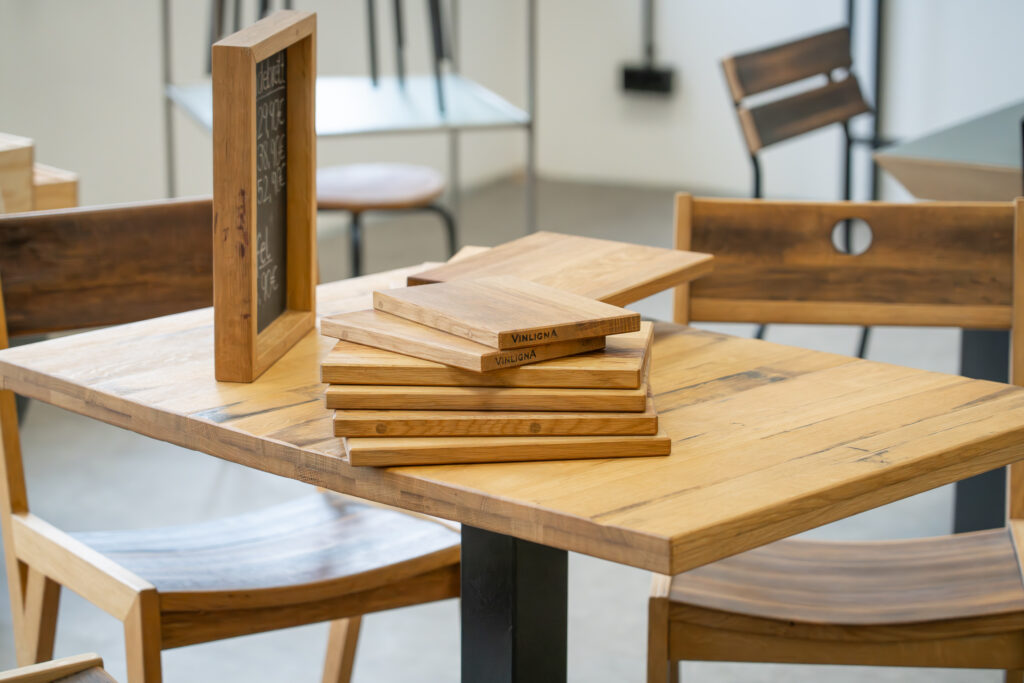In Alsenz, Rhineland-Palatinate, extraordinary pieces of furniture are created from a special raw material: used barrique barrels. In a complex process, the curved oak parts are steamed, pressed, dried, and then processed into high-quality furniture. As in any woodworking production facility, the Manufakturhof Alsenz also produces wood waste that can no longer be used for furniture production. In order to utilize these residual materials efficiently, the company relies on shredding and briquetting technology from WEIMA.
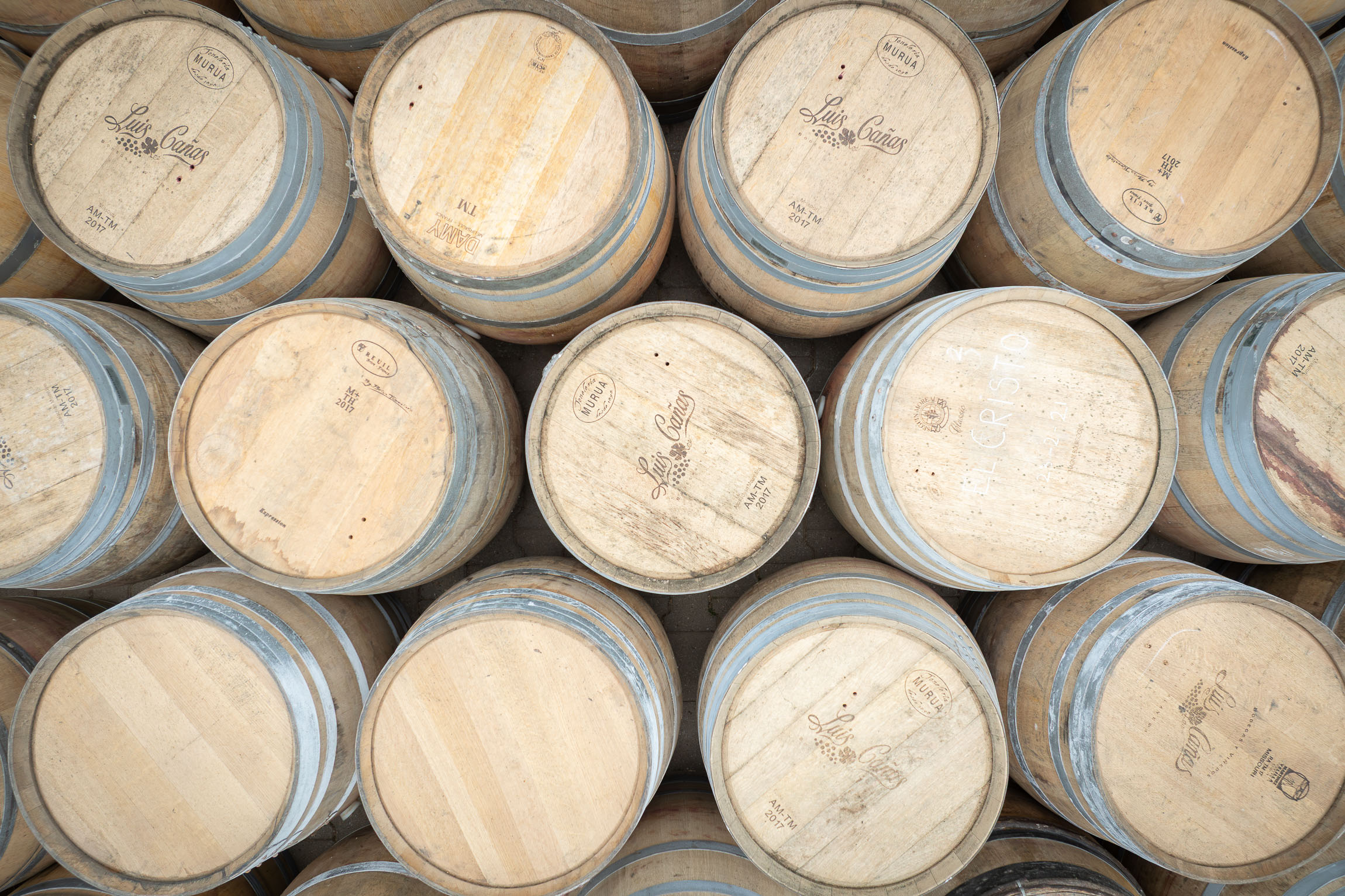
From wine barrels to designer furniture: sustainable furniture production with smart waste recycling
Shredding barrel staves with WEIMA WL 4
Precise craftsmanship transforms barrique barrels into distinctive pieces such as chairs, tables, benches, and wine racks - each one unique and steeped in history. The characteristic curvature of the barrel staves is partially retained, giving the furniture an unmistakable design language.
The first step is to select and inspect the used barrique barrels, which are mostly made of French or American oak. After delivery, the barrels are carefully dismantled into their individual parts. Each barrel stave is checked individually, cleaned of residues, and cut to size if necessary. This is followed by careful drying before the wood is sanded, smoothed, and refined both inside and out. Barrel staves that cannot be used, as well as other wood residues, are not simply disposed of in the factory, but are further processed.
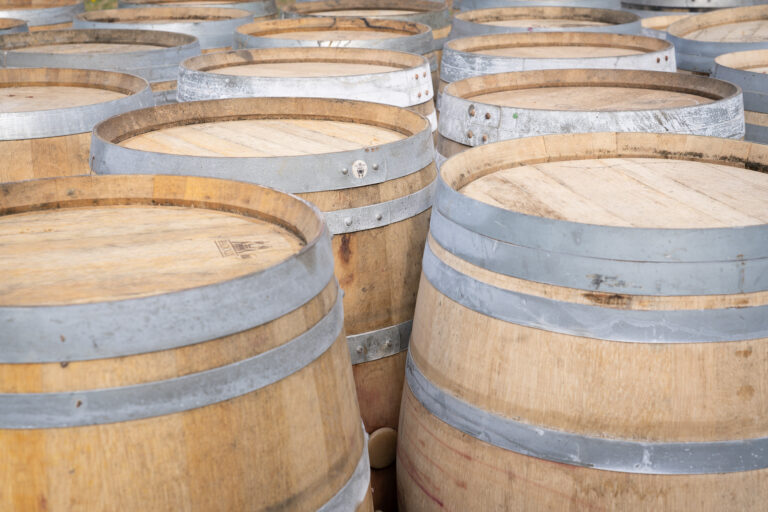
old barrique barrels
What to do with the wood waste? Shredding and briquetting is the solution.
In order to recycle these residual materials in the best possible way, the company relies on WEIMA machines: A WL 4 single-shaft shredder and a C 150 briquetting press. “All non-recyclable material, such as damaged barrel staves or wood scraps from cutting, is first shredded with the chipper,” explains Rüdiger Gries, Head of Sales and Finance.
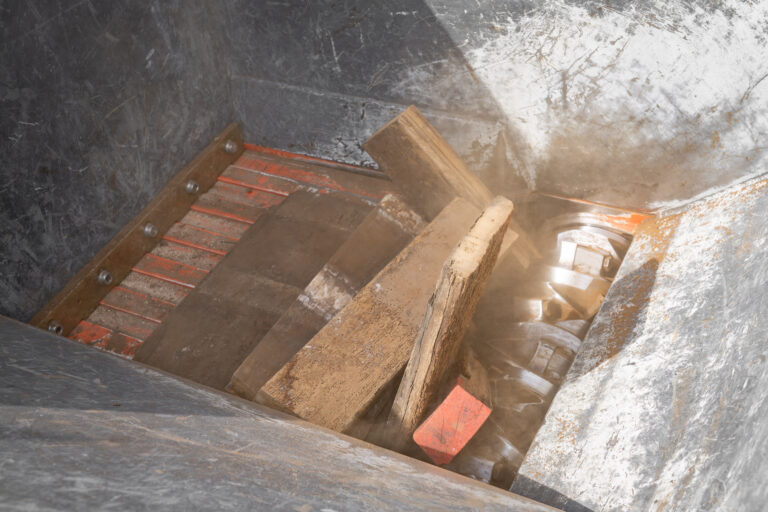
Old and damaged barrel staves are shredded in WL 4.
The wood chips produced are transported directly to the wood chip bunker via a spiral conveyor system. From there, they are fed into the company’s own wood chip heating system, which heats both the production facility and the adjacent residential building. The heating system is largely automated. Manual intervention is rarely necessary.
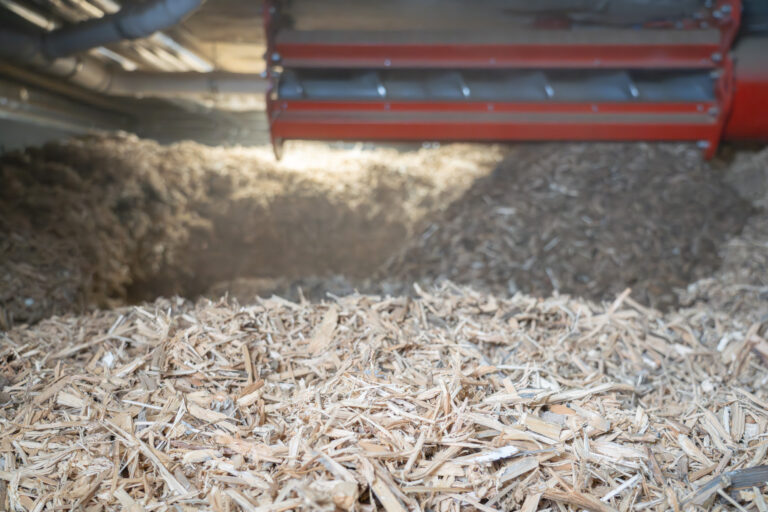
Wood chips are transported directly to the wood chip bunker via a spiral conveyor system.
In addition, all woodworking machines in the factory are connected to two extraction systems. The dust and fine wood particles produced are collected, periodically briquetted, and also used for heat generation. Briquetting takes place about once or twice a month, depending on the amount of material produced.
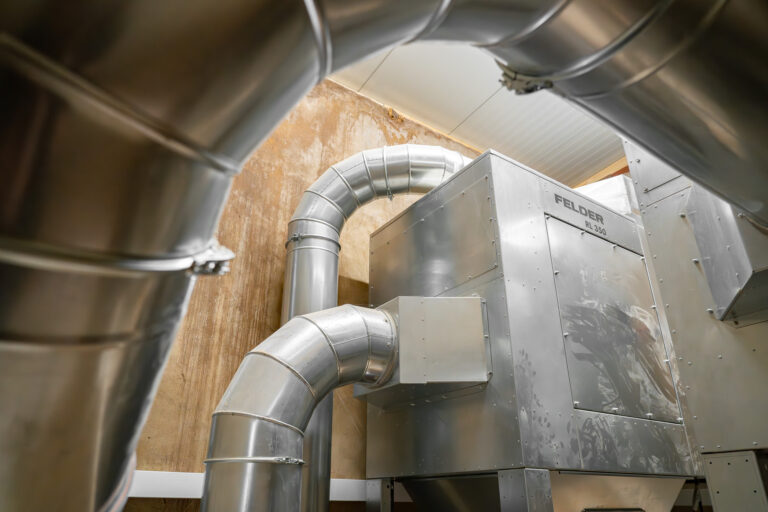
Extraction systems in which dust and fine wood particles are collected

We are happy to advise you.
Turn waste wood into valuable material – we can help you do it.
Powerful duo with a small footprint: WL 4 shredder and C 150 briquette press
When it comes to modern wood processing and sustainable waste recycling, the WL 4 and C 150 form a powerful duo. The WL 4 impresses with its robust construction, even under continuous load. With its powerful drive, replaceable cutting blades, and compact design, the wood shredder is ideal for businesses with limited space.
The C 150 briquette press, with its space-optimized design and proven WEIMA pressing mechanism, is the perfect addition. The high hydraulic pressing pressure produces solid briquettes – without any binding agents. In a business such as Holzmanufaktur Alsenz, reliable, space-saving, and energy-efficient technology is essential. The combination of both machines not only saves energy, but also reduces the volume of waste material by up to 80%, while at the same time lowering dust and fire risks.
Partnership on equal terms: Individual support from WEIMA
WEIMA was one of the few companies that took a close look at the local conditions during the bidding phase and assessed the technical requirements on site. This was a decisive factor for us in choosing our partner.

Through the targeted use of both machines, the Alsenz factory was able to achieve a closed material cycle: from the recycling of used barrels to the energetic use of residual materials. This not only saves costs, but also conserves resources and reduces waste. The WEIMA machines are not just a solution here, but part of a well-thought-out overall concept. In addition, the use of this technology supports compliance with the CSRD guidelines required by the EU by collecting, evaluating, and transparently documenting relevant sustainability data – such as resource use, waste quantities, and energy efficiency – as part of ESG reporting.
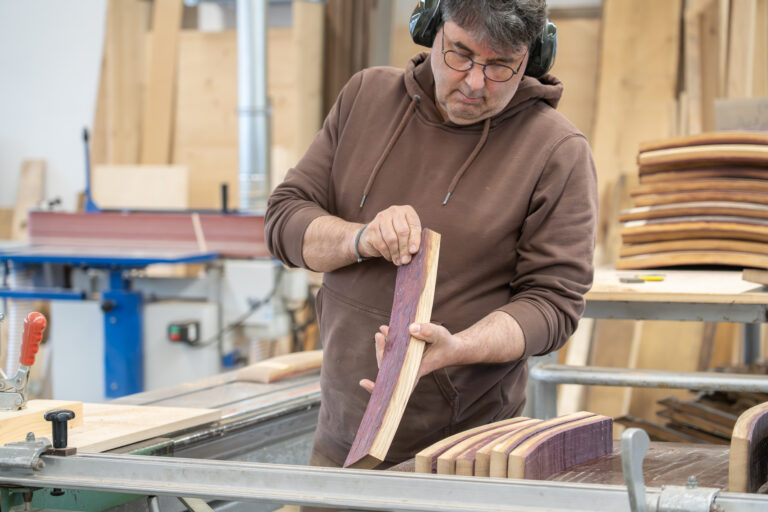
Selection and inspection of used barrels
Contact
Katherina Baborsky
Marketing
WEIMA Maschinenbau GmbH
Bustadt 6-10
74360 Ilsfeld
Contact
Sign-up for our newsletter
Additional Information
About WEIMA:
Over 40,000 machines sold worldwide. For over four decades, WEIMA has been manufacturing robust shredding and compacting machines for the disposal and processing of all types of waste. These include single-shaft shredders, four-shaft shredders, cutting mills, briquetting presses, packaging presses, and dewatering presses. The popular blood-orange-colored machines are successfully used for applications in the wood, plastic, paper, metal, and EBS industries.
Produced in Germany. Built for the world.
WEIMA shredders, briquetting, and dewatering presses are produced exclusively in Germany and come from production facilities in Saxony-Anhalt and Baden-Württemberg. Over 320 employees work on approximately 1,200 customer solutions for global use every year. Long-standing sales and service locations exist in the USA, Italy, India, and China. More than 80 agencies complement the global presence.
Newsletter
Sign-up for our newsletter today.
Sign-up for our newsletter
What are you looking for?
Explore all WEIMA solutions
